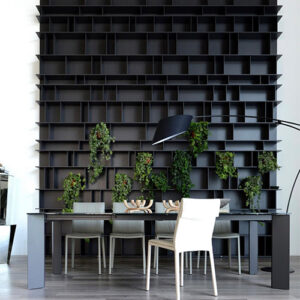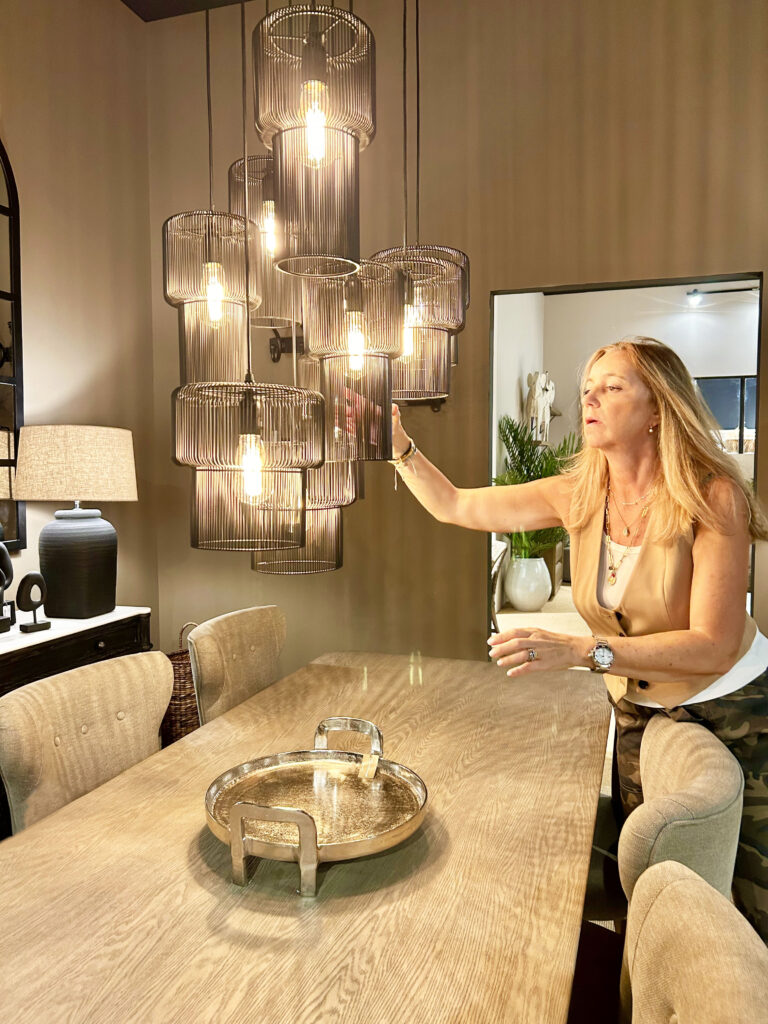“Good lighting elevates a mediocre architecture and bad lighting kills the best design”. This sentence by Oscar Niemeyer says it all about the importance of lighting in environments. In fact, lighting is a very powerful element in architecture and interior design. With it we can highlight certain architectural details or certain pieces, we can focus or blur parts of the space and it can even have the power to transform a space, creating lighter or more scenic environments according to the amount and intensity of light used.
Another characteristic of lighting is its ability to influence our body, provoking changes in mood, well-being and health, as well as affecting our decision-making. Light transmits sensations to us. Through the use of a certain light we can manage to transmit sensations of relaxation, stimulation, amplitude or even discomfort. What other element available to architecture and decoration has this power to change our feelings and state of mind? With it we can influence certain publics to become happier or sadder, more awake or more relaxed, we can create millions of atmospheres and countless scenarios just by means of certain luminotechnical games. It is incredible the control that light can have over us!
For lighting to create differentiation it is also essential to pay attention to the way in which the choice and distribution of light is made, the quality of light sources and the different colour temperatures. It’s important to pay attention to what you want to illuminate so that you can then assess whether the equipment to be used should be direct or diffused, accent or focus lighting to finally dedicate yourself to controlling the level of light according to the objective that you want for each environment. For lighting to be correct and be placed intelligently it has to be in coordination with the daily lives of its users, their habits and the times at which they use it.
The colour temperature of the light is a determining factor in the way we visualise objects and interpret colours throughout the day. While stronger lights stimulate the brain, warmer coloured lights provide emotional effects which transmit feelings of cosiness, tranquillity and relaxation. We can say that the higher the colour temperature or the cooler the light, the greater the sensation of alertness and focus, making us more productive for certain activities. While a light with lower colour temperature, ranging from yellow to shades of more orange, transmit us sensations of greater comfort and calm, being ideal for moments of lower productivity. Allied to colour temperature, light intensity is also directly related to our emotions, stimulating or inhibiting positive and negative sensations.
We can conclude with all this that being a seemingly easy subject, the study of the luninotechnics is a very important aspect of a project and when well designed is a strong ally of the interior architect and can be a great asset to improve a space. Furthermore, a project that has a professional dedicated to luminotechnics benefits from the differentiated use of the numerous types of equipment with the effectiveness of each product, reducing the amount of light points and consequently bringing more economy and more efficiency to the consumer contributing to a more comfortable, healthier and happier experience.
Having said this, it is clear that an interior design or decoration project must always be accompanied by a good lighting design, executed with detail and care, with specific attention to the experience of the environment and the correct use of lighting.
It is essential to think about this component right at the start of the remodelling or construction in conjunction with the interior architecture to facilitate efficiency in execution and the appropriate use of products. An architectural project with a good lighting study makes a brutal difference in the end and is an undeniable added value for the client. Specific luminaires, with efficient lamps positioned in the right places, work miracles.
Also in an interior design project, which includes everything from defining the layout to choosing furniture and other aesthetic elements, lighting should be an important point to consider. The designer’s job is to reconcile natural and artificial lighting, to understand how to provide greater aesthetic and sensory comfort. It is not always easy, because many of the times when the interior designer takes on the project it is not in the phase of major changes in the luminotechnical project. In these cases, a creative adaptation has to be made to what exists, improving and correcting some errors that would have been avoided if they had been thought of in time. At this stage, it has to be a surgical and more precise job of placing more intense or softer luminaires according to needs. It means being creative in the use of the different types of lighting that exist. It’s being technical in choosing the colour and temperature of the light according to the emotions that you want to awaken or soothe in each room.






